Find Help
More Items From Ergsy search
-
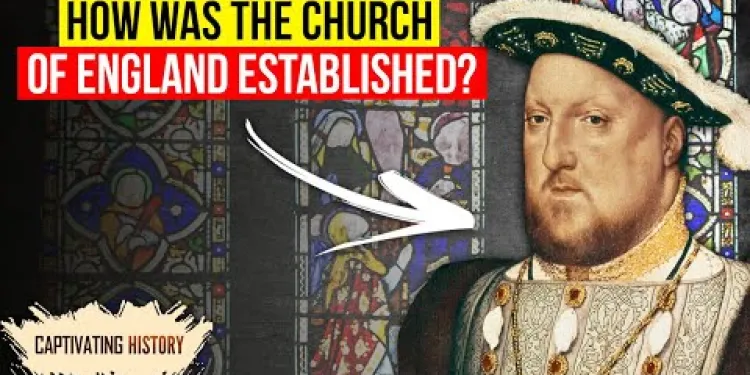
How Was the Church of England Established
Relevance: 100%
-

History of the Church of England
Relevance: 81%
-

A History of The Church of England
Relevance: 78%
-

The True History of the Catholic Church That No One Told You
Relevance: 44%
-

The history of the Baptist Church and Anabaptist: The Good The Bad and the Ugly
Relevance: 43%
-
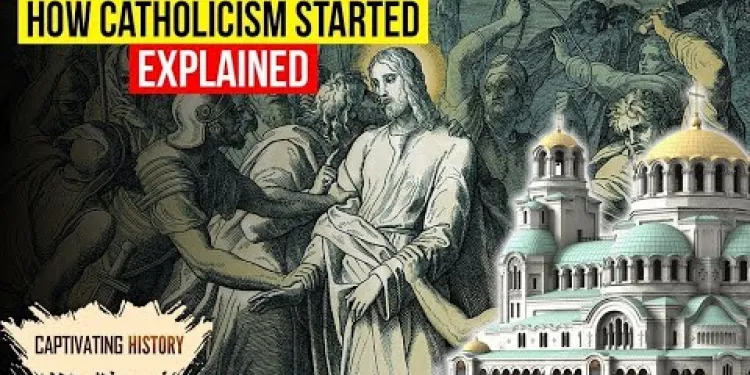
How Did Catholicism Start?
Relevance: 26%
-

Divorce UK (England and Wales) | UK Divorce Process and Overview Explained PART 1 | BlackBeltBarrister
Relevance: 24%
-

New endometriosis pill approved on NHS in England
Relevance: 24%
-
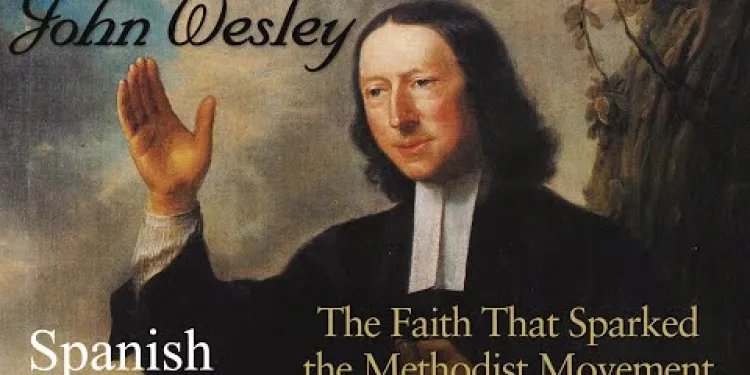
John Wesley: Faith That Sparked the Methodist Movement | Full Movie
Relevance: 24%
-

John Wesley: Faith That Sparked the Methodist Movement | Full Movie
Relevance: 24%
-

How to represent yourself in family court in England and Wales
Relevance: 18%
-

What if there is no food bank near me?
Relevance: 13%
-

Traditional Ground Burials
Relevance: 12%
-

Why do interest rates rise and fall?
Relevance: 11%
-

Is there a risk of yellow fever being spread by mosquitoes in the UK?
Relevance: 10%
-

Who regulates the performance and compliance of UK water companies?
Relevance: 10%
-

What is the current threshold for Stamp Duty in the UK?
Relevance: 10%
-

Is Zika virus present in the UK?
Relevance: 10%
-

How can I find a food bank near me?
Relevance: 9%
-

What does the disbandment of NHSE mean for me?
Relevance: 9%
-

What is an SVR and how does it relate to interest rate changes?
Relevance: 9%
-

How does council tax relate to wealth in the UK?
Relevance: 9%
-

Which body is responsible for enforcing refunds by UK water companies?
Relevance: 9%
-

What regions of the UK are most affected by mosquito-borne diseases?
Relevance: 9%
-

How can older adults find local hobby groups?
Relevance: 9%
-

Do all mosquitoes in the UK carry diseases?
Relevance: 9%
-

Who is responsible for providing school meals in the UK?
Relevance: 8%
-

What is the difference between a food bank and a food pantry?
Relevance: 8%
-

Do UK mosquitoes carry diseases?
Relevance: 8%
-

Will the increase in the National Living Wage affect inflation?
Relevance: 8%
-

What is the Pension Protection Fund?
Relevance: 7%
-

Are UK mosquitoes capable of transmitting Zika virus?
Relevance: 7%
-

How prevalent is West Nile virus in the UK?
Relevance: 7%
-

What is a tracker mortgage and how does it respond to interest rate changes?
Relevance: 7%
-

Is there an income threshold for students to qualify for the payment?
Relevance: 7%
-

How do interest rate changes affect my mortgage payments?
Relevance: 7%
-
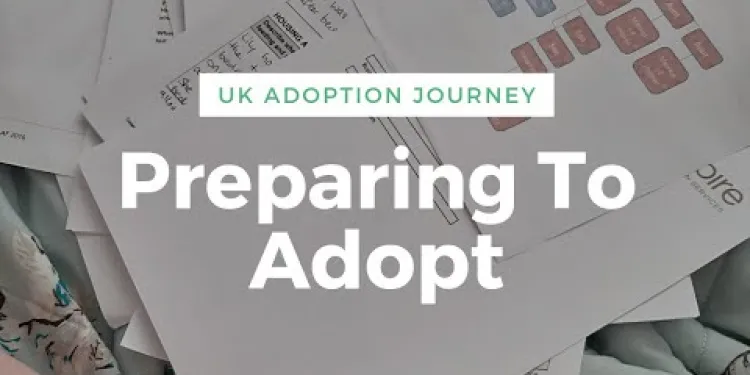
UK Adoption Journey | What we did to prepare | Stage One Update
Relevance: 7%
-

What agencies monitor and regulate sewage pollution in the UK?
Relevance: 7%
-
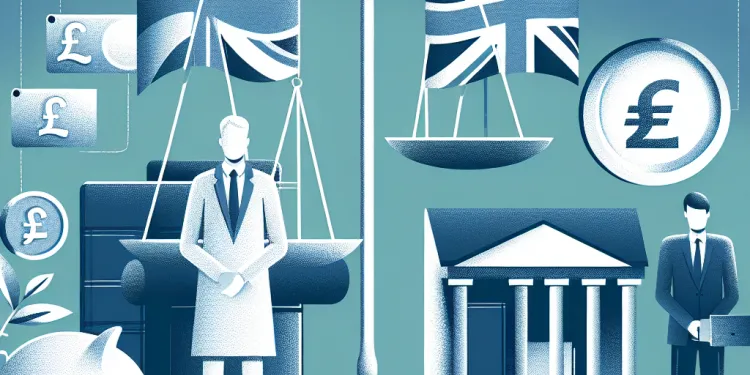
Understanding the New Domestic Abuse Laws in the UK
Relevance: 7%
-

Constipation: Tips for those suffering with constipation
Relevance: 7%
The Establishment of the Church of England
Historical Context
The Church of England, known also as the Anglican Church, was established in the 16th century during a time of significant religious, social, and political upheaval across Europe. The roots of its formation can be traced back to the broader movement of the Protestant Reformation, which challenged the papal authority of the Roman Catholic Church. This period saw a growing demand for religious reform, influenced by the works and ideologies of figures like Martin Luther and John Calvin. England, like many nations, was primed for a change in its religious landscape.
Henry VIII's Role
The direct impetus for the creation of the Church of England came from the personal and political conflict between King Henry VIII and the Roman Pope. Henry's desire for an annulment of his marriage to Catherine of Aragon, who had failed to produce a male heir, was denied by Pope Clement VII. Frustrated, Henry took a dramatic step in 1534 by declaring himself the Supreme Head of the Church of England through the Act of Supremacy. This pivotal moment effectively severed ties with the Roman Catholic Church and marked the beginning of a new national church.
Legal Changes and Religious Reforms
Following the break with Rome, a series of legislative acts cemented the theological and procedural changes within England. The Dissolution of the Monasteries (1536-1541) was a significant event, as it led to the redistribution of the Church's wealth and properties to the Crown and noblemen loyal to Henry. Additionally, the introduction of the Book of Common Prayer and the English Bible during Edward VI’s reign further established a unique religious identity distinct from Catholicism.
Impacts and Legacy
The establishment of the Church of England was more than a religious shift; it was a catalyst for deep social and political transformations within the United Kingdom. It gave rise to centuries of religious conflicts, including tensions with Catholic monarchs and communities, Puritan dissatisfaction, and the eventual flourishing of religious pluralism. The Church of England has since evolved, maintaining its status as the state church while adapting to the modern religious landscape. Its creation laid the groundwork for Anglicanism, which has spread worldwide, influencing religious and cultural practices across continents.
The Start of the Church of England
Understanding the History
The Church of England is also called the Anglican Church. It began in the 1500s. This was a time with a lot of changes in religion, society, and politics in Europe. Many people wanted changes in the Church. They did not want the Pope in Rome to have so much power. Important people like Martin Luther and John Calvin talked about new ideas. In England, people were ready for changes in their church.
What King Henry VIII Did
King Henry VIII helped start the Church of England because he had a big problem with the Pope. Henry wanted to end his marriage to Catherine of Aragon because they did not have a son. The Pope said no to this. Angry, Henry made himself the head of the Church of England in 1534. This meant the Church in England was now separate from the Catholic Church in Rome.
New Rules and Changes in Religion
After the split from Rome, new laws changed how things worked in England's church. From 1536 to 1541, the king took wealth and land from monasteries. This made the king and his friends richer. Later, new books like the Book of Common Prayer and the Bible in English gave the Church of England its unique character, different from the Catholic Church.
Effects and What Happened After
Starting the Church of England changed many things in the UK. It caused arguments about religion. There were fights with Catholic kings and people, and some people were unhappy with new religious rules. But over time, more religions appeared, and people had more choices in their beliefs. Today, the Church of England is still important. It has changed with new times and spread around the world, affecting many cultures and religions.
Helpful Tips: - Use audiobooks to help with reading. - Try using a text-to-speech app for reading support. - Highlight or underline important words and ideas in the text.Frequently Asked Questions
How was the Church of England established?
The Church of England was established in the 16th century when King Henry VIII broke away from the Roman Catholic Church. This separation was formalized in 1534 with the Act of Supremacy, which declared the king as the Supreme Head of the Church of England.
What was the main reason for the creation of the Church of England?
The main reason was King Henry VIII's desire to annul his marriage to Catherine of Aragon, which the Pope refused to grant. This led Henry to break away from the Catholic Church and establish a separate national church.
Who was the first head of the Church of England?
King Henry VIII became the first head of the Church of England after the Act of Supremacy in 1534.
What was the Act of Supremacy?
The Act of Supremacy was a law passed in 1534 declaring King Henry VIII as the Supreme Head of the Church of England, marking the official start of the English Reformation.
How did the English Reformation affect religious practices in England?
The English Reformation led to significant changes, including the introduction of an English Bible, the dissolution of monasteries, and reforms in church services and doctrines, moving away from Catholic practices.
Was the establishment of the Church of England universally accepted?
No, there were many who opposed the establishment of the Church of England, resulting in tensions, persecutions, and later conflicts such as the Pilgrimage of Grace.
How did the Church of England differ from the Catholic Church?
The Church of England maintained many traditional Catholic practices but rejected papal authority and later adopted Reformed theological elements. Over time, additional Protestant influences were incorporated.
What role did the Archbishop of Canterbury play after the establishment of the Church of England?
The Archbishop of Canterbury became the senior bishop and principal leader of the Church of England, presiding over religious matters and the spiritual direction of the church.
Did the Church of England produce its own religious texts?
Yes, under the Church of England, the Book of Common Prayer was developed as a standard for liturgy, and an authorised English Bible was commissioned, notably the King James Version.
How did the dissolution of monasteries impact the establishment of the Church of England?
The dissolution of monasteries was a crucial part of the Reformation, helping to eliminate Catholic monastic institutions and redistribute their wealth and lands, reinforcing the Reformation policies.
What was the Pilgrimage of Grace?
The Pilgrimage of Grace was a popular uprising in 1536 in Northern England, in response to Henry VIII's establishment of the Church of England and the dissolution of monasteries.
How did the Church of England evolve after Henry VIII's reign?
After Henry VIII, the Church of England continued to evolve under successive monarchs, swinging between more Protestant reforms under Edward VI, a return to Catholicism under Mary I, and a moderate Protestant settlement under Elizabeth I with the Elizabethan Religious Settlement.
What was the Elizabethan Religious Settlement?
The Elizabethan Religious Settlement was a series of laws under Queen Elizabeth I that established a moderate form of Protestantism as England's national faith, aiming to unite the country religiously.
How is the Church of England viewed today?
Today, the Church of England is recognized as the mother church of the Anglican Communion and continues to be a significant religious institution in the UK, with the monarch as its Supreme Governor.
Is the Church of England still the state church in the United Kingdom?
Yes, the Church of England remains the established state church in England, with certain formal roles in the UK government and society, including the requirement for the monarch to be a member.
How Did the Church of England Start?
A long time ago, in 1534, a king named Henry VIII wanted a new church. He didn't agree with the church at that time. So, he made the Church of England. Now the King, not the Pope, was in charge.
If reading is hard, try using audio books or read with a friend or adult. They can help you understand better!
The Church of England started a long time ago in the 1500s. This was when King Henry the Eighth did not want to follow the rules of the Roman Catholic Church anymore. In 1534, there was a new rule called the Act of Supremacy. This rule said that King Henry was the boss of the Church of England.
Why was the Church of England made?
The Church of England was created because the King wanted to change some rules. King Henry VIII made the Church because he wanted to be the boss of the church in England. He didn't want to follow the Pope's rules anymore. This way, he could make his own decisions.
To better understand this, you can use pictures or watch videos about King Henry VIII and the Church of England.
King Henry VIII wanted to end his marriage to Catherine of Aragon. The Pope said no. This made Henry very upset. Because of this, Henry decided to leave the Catholic Church and create his own church in England.
For extra help with reading, you can:
- Listen to audiobooks. They read the story out loud to you.
- Use a reading app. Some apps can read the words to you.
- Ask someone to read with you. Reading together can be fun.
Who was the first leader of the Church of England?
The first leader of the Church of England was King Henry VIII. He said he was in charge of the church in England. This happened a long time ago, in the year 1534.
If it's hard to remember names and dates, you can try using a timeline. A timeline is a straight line where you write down important events in the order they happened.
King Henry the Eighth became the first leader of the Church of England in 1534. This happened because of a law called the Act of Supremacy.
What was the Act of Supremacy?
The Act of Supremacy was a law made in England a long time ago. It said the king or queen is the boss of the Church in England.
This law came because King Henry VIII wanted to make church decisions himself.
If reading is hard, you can try:
- Reading with someone else.
- Listening to an audiobook about this topic.
- Watching a simple video about King Henry VIII and the Church.
The Act of Supremacy is a law from a long time ago, in the year 1534. This law said that King Henry VIII was the boss of the Church of England. This was the beginning of changes in the church.
Helpful Tips:
- Break big words into smaller parts.
- Use pictures or diagrams to help understand.
- Read with someone who can explain tricky parts.
What changes happened to religious practices in England because of the English Reformation?
The English Reformation was a time when people in England changed how they practiced religion. Let's learn about it in a simple way.
Here are some things that changed:
- The King made a new church. It was called the "Church of England". The King was in charge of this church, not the Pope.
- People went to different churches. Many people used to follow the Catholic Church, but after the Reformation, they went to the Church of England.
- The Bible was read in English. Before, it was in Latin, which many people couldn't understand. Now, more people could read it and understand it.
If you want help with understanding this, you can:
- Ask a teacher or parent to explain more.
- Look at pictures or watch videos about the English Reformation.
- Use simple maps or drawings to see how things changed.
The English Reformation was a big change. It made some important things happen. People started using a Bible written in English. Many monasteries were closed down. Church services and teachings also changed. They stopped following some Catholic ways.
Did everyone agree with the start of the Church of England?
No, not everyone liked the Church of England being created. Some people were against it. This led to fights and problems, like the Pilgrimage of Grace.
- Use a dictionary to check word meanings.
- Ask someone to read it with you.
What is different between the Church of England and the Catholic Church?
The Church of England and the Catholic Church are both Christian. But they have some differences.
Here are some ways they are different:
- The leader of the Church of England is the King or Queen. The leader of the Catholic Church is the Pope.
- In the Church of England, priests can get married. In the Catholic Church, priests cannot get married.
- They have different services and traditions.
If you find reading hard, try these tips:
- Use a ruler or your finger to follow the words.
- Ask someone to read with you and help you understand.
- Listen to audiobooks if reading is tricky.
The Church of England kept many old Catholic ways but did not listen to the Pope. Later, it took on some new ideas from Reformed churches. After a while, it added more Protestant things too.
What did the Archbishop of Canterbury do after the Church of England started?
The Church of England began a long time ago. It had a leader called the Archbishop of Canterbury. Here is what he did:
- He helped lead the Church of England.
- He made sure the church ran smoothly.
- He guided people on how to pray and worship.
- He talked to other church leaders and the king or queen.
If you want to learn more, you can ask a teacher or use books with pictures. Videos about history can help too!
The Archbishop of Canterbury is a very important leader in the Church of England. He is the top bishop and helps guide the church in religious matters.
Did the Church of England make its own books about God?
The Church of England made some special books about God.
These books help people learn about God and how to pray.
If you need help reading, you can:
- Ask someone to read with you.
- Use an audio version of the book.
- Look at pictures that help explain the words.
Yes, the Church of England made a special book called the Book of Common Prayer. This book tells people how to pray. They also made an important English Bible called the King James Version.
What happened to the Church of England after the monasteries closed?
The closing of monasteries was an important part of the big changes in religion. It helped to get rid of Catholic monasteries. The money and land from these monasteries were given to others. This helped make sure the new religious rules were strong.
What was the Pilgrimage of Grace?
The Pilgrimage of Grace was a big protest in England in 1536.
Many people were upset with King Henry VIII.
They did not like his changes to the churches and other rules.
People marched together to show they were unhappy.
They wanted the King to listen and fix things.
Helpful Tips:
- Use simple words to understand better.
- Break big ideas into smaller parts.
- Ask a friend or teacher if you need help.
- Use pictures or videos to see what happened.
The Pilgrimage of Grace was a big protest that happened in 1536. It took place in Northern England. People were upset because King Henry VIII made changes. He started the Church of England and closed down many monasteries.
What happened to the Church of England after King Henry VIII?
Here is a simpler way to understand:
- King Henry VIII started the Church of England.
- After Henry VIII, other kings and queens changed the church.
- These changes made the Church of England more different from the Catholic Church.
Here are some things you can do to help:
- Use a reading app to read aloud.
- Ask someone to explain words you don't know.
- Use pictures or simple charts to understand better.
After Henry VIII, the Church of England changed a lot. Different kings and queens made changes. When Edward VI was king, the Church became more Protestant. Then, Queen Mary I made the Church Catholic again. After that, Queen Elizabeth I made things more balanced. She created the Elizabethan Religious Settlement to make both Protestants and Catholics happy.
What Was the Elizabethan Religious Settlement?
The Elizabethan Religious Settlement was a plan made by Queen Elizabeth I. It was about how people should worship and go to church in England.
This plan helped keep peace between different religious groups. It also set rules for the church. It is important because it affected how people in England practiced their religion.
To help understand this topic, you can use pictures or timelines. These tools can show how things changed over time. Listening to a story or watching a video can also be helpful.
The Elizabethan Religious Settlement was a set of rules made by Queen Elizabeth I. These rules decided that a simple form of Protestant religion would be England's main faith. The goal was to bring people together in their beliefs.
What Do People Think About the Church of England Today?
The Church of England is a big group of churches. People have different opinions about it. Some people like it and some don't.
Here are some ways to learn more:
- Talk to someone who knows about the Church of England.
- Read a simple book or watch a video about it.
- Visit a church to see what it is like.
- Ask questions if you do not understand something.
Remember, it is okay to have your own thoughts about the Church of England.
Today, the Church of England is an important church. It is like a big family of churches called the Anglican Communion. It is an important part of religion in the UK. The King or Queen is the big boss of this church.
Is the Church of England still the main church in the UK?
Yes, the Church of England is still the main church in England. It has some special jobs in the UK government and society. For example, the king or queen must be a member of this church.
Useful Links
- Ergsy carfully checks the information in the videos we provide here.
- Videos shown by Youtube after a video has completed, have NOT been reviewed by ERGSY.
- To view, click the arrow in centre of video.
- Most of the videos you find here will have subtitles and/or closed captions available.
- You may need to turn these on, and choose your preferred language.
- Go to the video you'd like to watch.
- If closed captions (CC) are available, settings will be visible on the bottom right of the video player.
- To turn on Captions, click settings .
- To turn off Captions, click settings again.
More Items From Ergsy search
-

How Was the Church of England Established
Relevance: 100%
-

History of the Church of England
Relevance: 81%
-

A History of The Church of England
Relevance: 78%
-

The True History of the Catholic Church That No One Told You
Relevance: 44%
-

The history of the Baptist Church and Anabaptist: The Good The Bad and the Ugly
Relevance: 43%
-

How Did Catholicism Start?
Relevance: 26%
-

Divorce UK (England and Wales) | UK Divorce Process and Overview Explained PART 1 | BlackBeltBarrister
Relevance: 24%
-

New endometriosis pill approved on NHS in England
Relevance: 24%
-

John Wesley: Faith That Sparked the Methodist Movement | Full Movie
Relevance: 24%
-

John Wesley: Faith That Sparked the Methodist Movement | Full Movie
Relevance: 24%
-

How to represent yourself in family court in England and Wales
Relevance: 18%
-

What if there is no food bank near me?
Relevance: 13%
-

Traditional Ground Burials
Relevance: 12%
-

Why do interest rates rise and fall?
Relevance: 11%
-

Is there a risk of yellow fever being spread by mosquitoes in the UK?
Relevance: 10%
-

Who regulates the performance and compliance of UK water companies?
Relevance: 10%
-

What is the current threshold for Stamp Duty in the UK?
Relevance: 10%
-

Is Zika virus present in the UK?
Relevance: 10%
-

How can I find a food bank near me?
Relevance: 9%
-

What does the disbandment of NHSE mean for me?
Relevance: 9%
-

What is an SVR and how does it relate to interest rate changes?
Relevance: 9%
-

How does council tax relate to wealth in the UK?
Relevance: 9%
-

Which body is responsible for enforcing refunds by UK water companies?
Relevance: 9%
-

What regions of the UK are most affected by mosquito-borne diseases?
Relevance: 9%
-

How can older adults find local hobby groups?
Relevance: 9%
-

Do all mosquitoes in the UK carry diseases?
Relevance: 9%
-

Who is responsible for providing school meals in the UK?
Relevance: 8%
-

What is the difference between a food bank and a food pantry?
Relevance: 8%
-

Do UK mosquitoes carry diseases?
Relevance: 8%
-

Will the increase in the National Living Wage affect inflation?
Relevance: 8%
-

What is the Pension Protection Fund?
Relevance: 7%
-

Are UK mosquitoes capable of transmitting Zika virus?
Relevance: 7%
-

How prevalent is West Nile virus in the UK?
Relevance: 7%
-

What is a tracker mortgage and how does it respond to interest rate changes?
Relevance: 7%
-

Is there an income threshold for students to qualify for the payment?
Relevance: 7%
-

How do interest rate changes affect my mortgage payments?
Relevance: 7%
-

UK Adoption Journey | What we did to prepare | Stage One Update
Relevance: 7%
-

What agencies monitor and regulate sewage pollution in the UK?
Relevance: 7%
-

Understanding the New Domestic Abuse Laws in the UK
Relevance: 7%
-

Constipation: Tips for those suffering with constipation
Relevance: 7%


